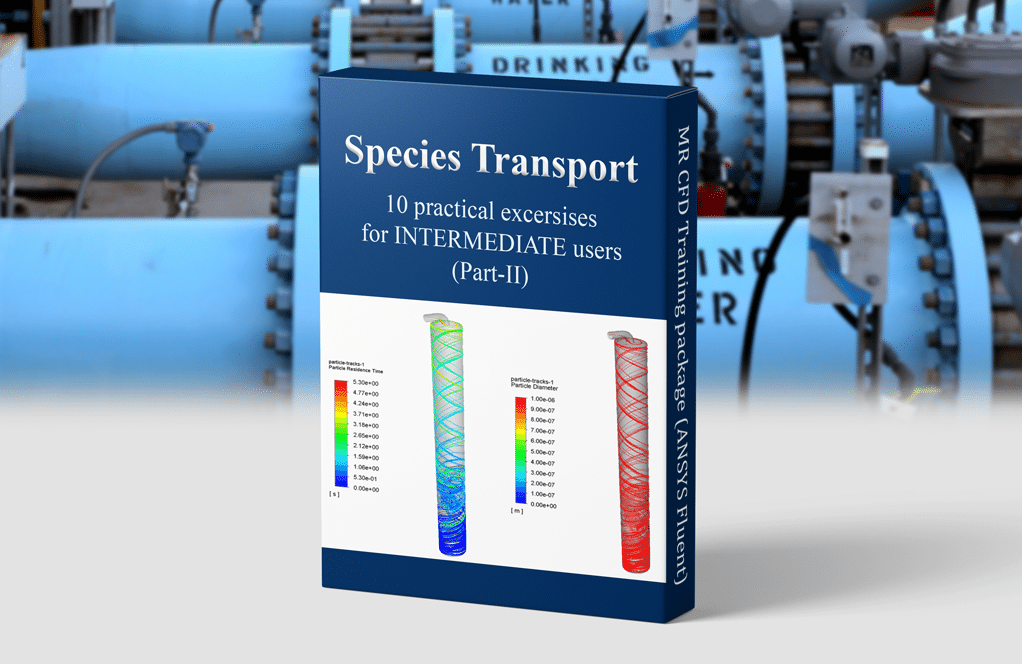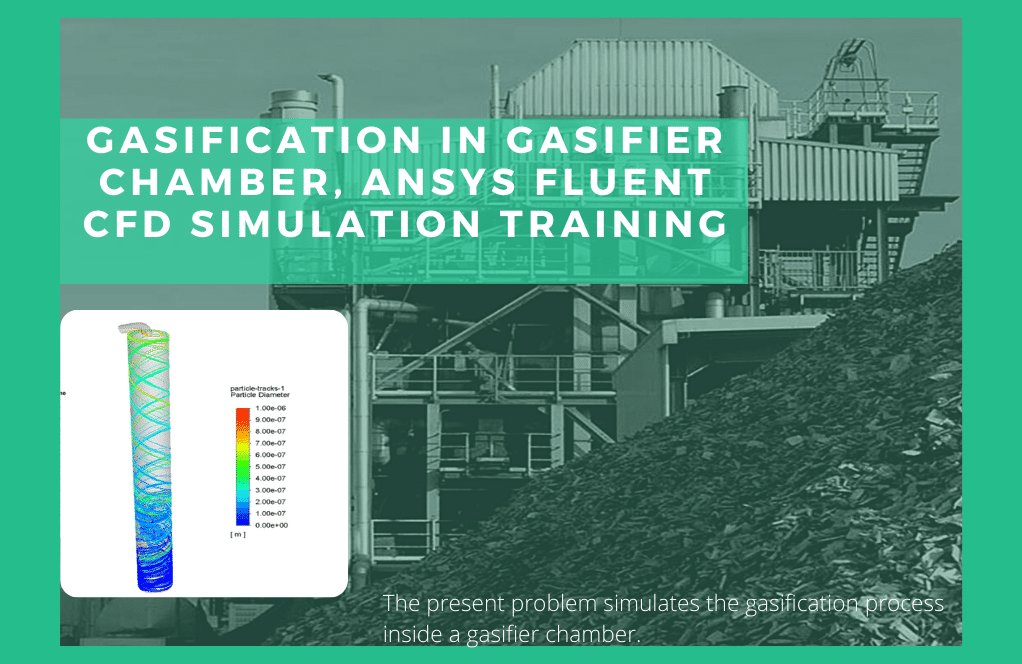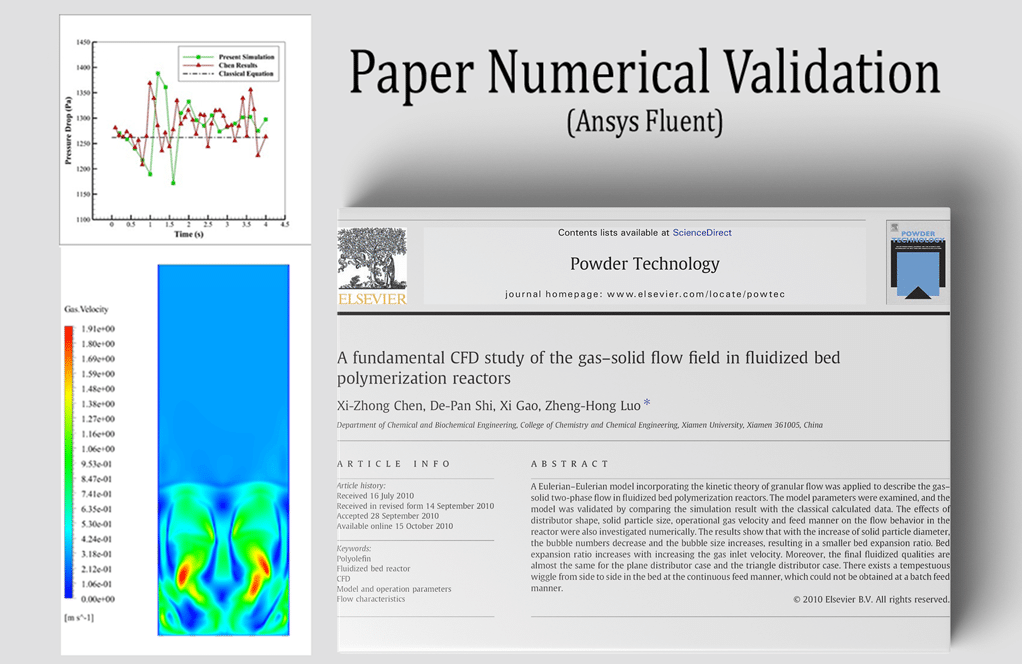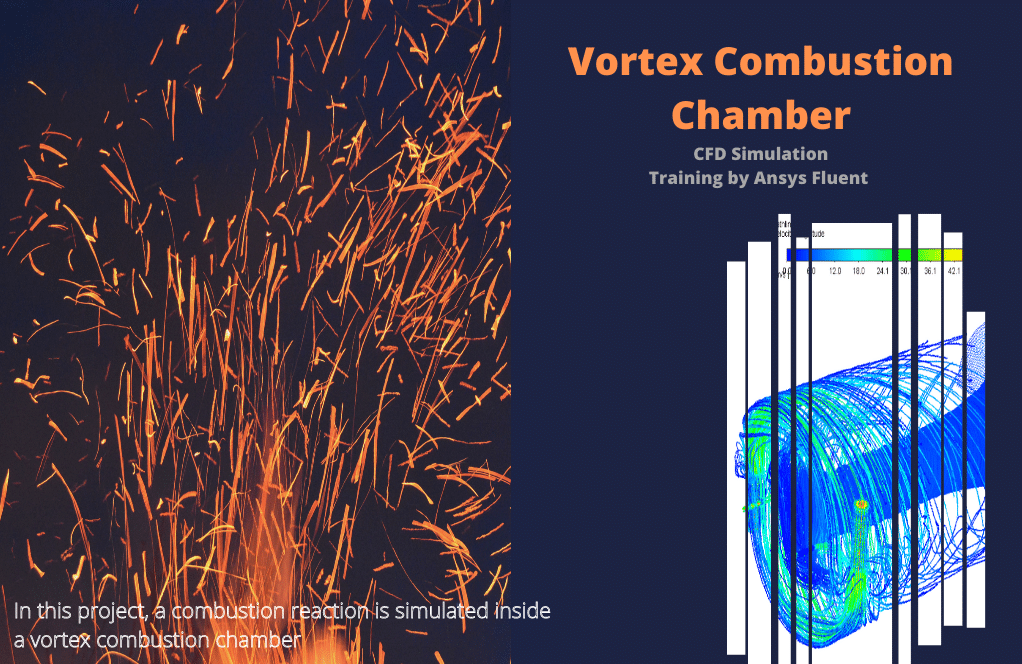Species Transport Training Package, Intermediate Part 2, 10 Practical Exercises
$329.00 $164.50 Student Discount
Species Transport – ANSYS Fluent Training Package, 10 Practical Exercises for INTERMEDIATE Users (Part-II)
Click on Add To Cart and obtain the Geometry file, Mesh file, and a Comprehensive ANSYS Fluent Training Video.To Order Your Project or benefit from a CFD consultation, contact our experts via email (info@mr-cfd.com), online support tab, or WhatsApp at +44 7443 197273.
There are some Free Products to check our service quality.
If you want the training video in another language instead of English, ask it via info@mr-cfd.com after you buy the product.
Description
Species Transport – ANSYS Fluent Training Package, 10 Practical Exercises for INTERMEDIATE Users (Part-II)
This CFD training package is prepared for intermediate users of ANSYS Fluent software in the Species Transport area. You will learn and obtain 10 practical exercises including comprehensive training on how to simulate medium projects. The achieved knowledge will enable you to choose the most appropriate modeling approaches and methods for applications and CFD simulations.
This package trains the necessary proficiency you will require to start doing average computational fluid dynamics (CFD) Species Transport simulations on your own using Ansys Fluent software. Qualified training movies and comprehensive CFD concept explanations, including setup, solution, results, and all perspectives of carrying out CFD simulations in Ansys Fluent.
Combustion
In project number 1, the Steady combustion of methane and air in a simple extended cubical combustion chamber is investigated. Radiation heat transfer must be considered since combustion chambers undergo extremely high temperatures. In this project, the mixture’s static temperature has a maximum value of 3500 k within the chamber. Methane and air enter the domain from inlets, in which methane is injected into the domain using only one inlet. Still, airflow is injected using two inlets due to achieve an approximately uniform mixture of fuel and air.
Project number 2 aims to model Simple Premixed Combustion in a Porous zone and see how a porous zone affects combustion temperature and stabilizes it. This simulation is a matrix-stabilized burner, and the results are compared to the same premixed combustion without porosity. the Species transport model has been used. gravity considered as -9.81 m/s-2 on the y-axis.
Project number 3 simulates the combustion process of methane gas in a vertical lime kiln. The construction of a vertical lime kiln consists of two main parts, including the combustion zone and the Preheating Zone. The fuel and air enter the building from the middle of the lime kiln and form a combustion reaction. As a result of the chemical combustion reaction, a significant amount of heat is produced, increasing the temperature inside the lime kiln.
In project number 4, we simulated the gas turbine combustion chamber using a discrete phase model (DPM) and species transport mode. In this case, the effect of spraying Benzene particles is done using the Eddy-dissipation combustion model. This combustion chamber is commonly used for jet engine users.
Given the increasing industrial use of coal consumption and the importance of finding clean energy coal technology development, modeling its combustion characteristics is very important. In project number 5, a combustion chamber is simulated. We used two-way DPM for particles and anthracite as an injection material has been used in this simulation. Anthracite is the best type of coal with the highest calorific value.
Spray Dryer (Species Transport)
In project number 6, we use two types of continuous and discrete phases. In fact, the hot airflow, which is responsible for evaporating the moisture contained in the solution, enters the spray dryer chamber as a continuous phase and flows into the chamber (Eulerian). At the same time, a solution containing water and solid particles (Lagrangian) injects into the chamber as a discrete phase. The main purpose of this simulation is to investigate the behavior of particles that flow as a discrete phase in a continuous flow.
Coronavirus
Project number 7 simulates the airflow from a patient’s (COVID-19) mouth in a Hospital room. In fact, in the present case, a special operating room has been designed that is equipped with ventilation and air conditioning systems. The main purpose of this simulation process is to allow fresh air (oxygen-carrying) to flow continuously into the interior of the room rather than to expel polluted air from the patient’s mouth to the environment. Ventilation systems and air conditioners are designed on the ceiling and floor.
Desalination (Species Transport)
Project number 8 investigates the performance of a step solar desalination unit. The present model consists of a small chamber with a sloping glass surface on both sides and steps within it, where saline water flows on the surface of these steps. Solar radiation heat transfer passes through the glass to the water’s surface in the enclosure to evaporate the water surface on the step walls. The resulting vapor meets the cold glass surface and undergoes a distillation process. Pure water from hot vapor distillation moves down the slope of the glass plate and discharges as pure water.
Gasification
Project number 9 simulates the gasification process inside a gasifier chamber. The gasification process is a set of chemical reactions in which a carbon-based substance is converted to carbon monoxide, hydrogen, and carbon dioxide. This process’s product is considered a renewable energy source with many industrial applications.
Multi-component (Species Transport)
In project number 10, the Multi-component particle type for droplets has been investigated. We used the one-way DPM to simulate the discrete phase.














Trudie Roberts DDS –
The Species Transport Training Package has honed my understanding of various complex simulations. I was most impressed with the real-life applications, particularly the solar desalination unit project. The clear guidance and detailed explanations provided have enabled me to confidently apply CFD to my work in renewable energy. Kudos to MR CFD for such a well-structured and informative training package!
MR CFD Support –
Thank you for taking the time to review our Species Transport Training Package. We are delighted to hear our course was met with satisfaction and could augment your work in renewable energy. We aim to deliver real-life applicable knowledge and it’s rewarding to know we have achieved this. We appreciate your positive feedback and hope our products continue to support your professional growth. If you need further information or assistance in your future projects, do not hesitate to reach out.
Oma Wolf III –
My understanding of the discrete phase model was reinforced with this package, but I just wondered if the Species Transport package covers scenarios with significantly varying temperatures and how it deals with the thermal properties of species at different temperatures?
MR CFD Support –
Yes, the Species Transport Training Package does cover scenarios with varying temperatures. Especially with the combustion simulations, thermal properties of species are very important and are taken into account. The software may provide pre-defined properties or allow for user-defined functions to accommodate the variations in properties at different temperatures, ensuring accurate results.
Jairo Weimann –
I recently completed the ‘Species Transport Training Package, Intermediate Part 2’ and have to say it was a fantastic learning experience! The ten practical exercises were diverse, closely mimicking real-world scenarios and helped me understand medium complexity CFD simulations. From premixed combustion in a porous zone to spray drying and even solar desalination, each project offered unique challenges and valuable insights. The training materials, especially the tutorial videos, are clear, detailed, and very educational. I particularly appreciated the section on gasification as it relates directly to my field of interest in renewable energy. Kudos to MR CFD Company for putting together such a thorough educational package!
MR CFD Support –
Thank you so much for your wonderful review! We are thrilled to hear that our ‘Species Transport Training Package, Intermediate Part 2’ met your expectations and provided valuable insights across a range of CFD challenges. It’s great to know our materials proved educative and aided in expanding your knowledge regarding renewable energy applications. Your feedback is greatly appreciated, and we hope to continue providing quality training to help advance your skills.
Mrs. Sonia Leannon V –
I’ve recently gone through the Species Transport Training Package, Intermediate Part 2 practical exercises, and the projects included have dramatically improved my understanding of various combustion models and species transport applications! I just want to say that these exercises neatly address complex phenomena in a way that made it a breeze to comprehend and practice, particularly enjoying the varied industries and scenarios covered from spray dryers to gasification processes. Thank you for the excellent learning experience!
MR CFD Support –
Thank you so much for your wonderful feedback! We’re delighted to hear that our Species Transport Training Package met your learning needs and helped enhance your understanding of combustion and species transport in CFD. Our goal is always to deliver clear and practical exercises tailored for different industry applications, and it’s fantastic to know we delivered that for you. Thanks once again for choosing our training materials, and we look forward to continuing to support your growth in CFD expertise!
Elenora Abbott –
Thank you for breaking down the advanced topics included in the Species Transport Training Package Intermediate Part 2. The explanation of the various CFD scenarios ensures a comprehensive learning experience for mid-level ANSYS Fluent users.
MR CFD Support –
Thank you for your kind words! We’re really glad to hear that the activities and the way they were explained are helping you to further your understanding of CFD applications in ANSYS Fluent. It’s great that our training package is meeting your needs. If you have any further feedback or need assistance with your learning journey, feel free to reach out to us!
Prof. Harley Predovic –
The training package gave me valuable insight into simulating species transport with ANSYS Fluent, mastering various applications brilliantly demonstrated through the practical exercises. The step-by-step video tutorials are excellent; they provide deep understanding, lets you feel at ease with the software’s capabilities, especially the simulations associated with combustion, desalination, and COVID-19 airflow. Notably, the solar desalination unit simulation in Project 8 was quite eye-opening! Thank you, MR CFD Company, for such an educational and proficient course.
MR CFD Support –
We’re truly pleased to hear you found the Species Transport Training Package so educational and helpful for your simulations. Thank you for highlighting the solar desalination unit simulation and other projects; it’s great to know that the practical exercises and tutorials enhance your experience. Your appreciation is immensely valued, and we strive to provide quality learning materials. If you ever have any questions or need further assistance with your CFD journey, please don’t hesitate to reach out. Thank you for choosing our products!